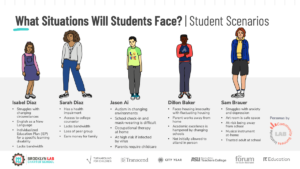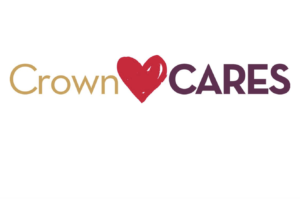Phonological Awareness: The Number One Predictor of Reading Success
Key Points
-
For many of us, learning to read seems like something that just happened overnight.
-
But learning to read is not automatic and it happens way before kids understand that letters stand for sounds; children start learning to read by gaining a language skill called phonological awareness (PA).

By: Jeanne Jeup
“Phonological awareness is an awareness that the words that we speak can be taken apart, and phonological refers to the sound system of language. We do it with our ears, not with sight; it is a broad term that encompasses language in chunks; it happens before kids even understand that letters stand for sounds – Margie Gillis, Ed.D., literacy expert who teaches kids with Dyslexia, President, Literacy How
For many of us, learning to read seems like something that just happened overnight. One day our parents were reading us to us, then like magic, with enough repetition, we just started to read the words on the page.
But learning to read is not automatic and it happens way before kids understand that letters stand for sounds; children start learning to read by gaining a language skill called phonological awareness (PA).
The Struggle to Read and Myths Behind Dyslexia
Up to 50% of children require direct, or explicit, instruction to learn to read proficiently, while up to 15% of children require explicit instruction to learn to read. Explicit instruction is presented in a sequential format, which provides children with the review and consistent practice that allow them to encode (spell) and decode (read) with ease.
The International Dyslexia Association (IDA) indicates that instruction for students with dyslexia or other reading disabilities should include Structured Literacy™ programs, an explicit, systematic, and cumulative reading program. It integrates listening, speaking, reading, and writing.
There are some common myths and misconceptions about individuals who have dyslexia. Decoding Dyslexia, a grassroots parent group, helps break down some of these myths.
The first is that dyslexia is rare. In fact, Dyslexia affects 1 in 5 people, according to 25+ years of research by the National Institutes of Health and Studies at Yale University. The American Academy of Pediatrics states that dyslexia is the most common learning disability, accounting for 80% of all learning disabilities.
Another myth is that children with dyslexia will outgrow it. In fact, children do not outgrow dyslexia. Dyslexia can be remediated by the right kind of instruction, but symptoms do not go away just because a child grows up. Children with dyslexia grow up to be adults with dyslexia.
And finally, the most common myth is that people with dyslexia see things backwards. In actuality, people with dyslexia see things just like everyone else. They do have trouble with directionality and often have difficulty finding the right names for things. Although people with dyslexia may write letters and numbers backwards, not all do. Plus, this is considered “normal” through the end of first grade. Children with dyslexia actually have trouble processing and manipulating the sounds of language.
If these students are taught with systematic, explicit, multi-sensory instruction, reading will improve; and, once success is found with phonemic awareness and phonics (Reading Foundational Skills), theses students can begin to master fluency, which is a bridge to deeper levels of reading, vocabulary, and comprehension.
What is PA and What Does it Have to Do With Reading?
Phonological awareness is the understanding that our spoken language is made up of words, and our words are made up of individual units of sounds called phonemes (Zgonc, 2010). It is a broad skill that includes identifying and manipulating units of oral language. It includes all of the skills that make up the concept of a spoken word, rhyme, syllables, phonemes, and phoneme manipulation.
Consider the following examples:
“Susie sells seashells down by the seashore” – this is an example of an alliteration.
Eric Carle’s,” “Brown Bear, Brown Bear, What do you See? I see a little frog looking at me.” – this is an example of a nursery rhyme.
Words are made up of sound parts, called syllables. For example: Mag-ni-fi-cent (4 syllables) El-e-phant (3 syllables) – Tur-key (2 syllables) and Shoe (1 syllable).
Phonemic awareness is the recognition that words are composed of phonemes (sounds), which have distinct articulatory features (Armbruster, 2001). It is the foundation for reading and lets young readers recognize and work with the sounds of spoken language.
What is a Phoneme and Why Do You Need Them for Reading Success
We grow up learning there are 26 letters in the alphabet. So naturally, one would think there are 26 letter sounds. But there are approximately 44 letter sounds, and they are made up of something called phonemes. In addition, those 44 sounds can be spelled 250 different ways (e.g., /k/ as in c, k, ck, ch, que). Unless explicitly taught and practiced, it can be challenging to hear individual sounds within words and individual words within sentences. Most of us have never heard of phonemes, unless one becomes a reading teacher (and even some reading teachers have never heard of them.) A phoneme is the smallest unit of sound in spoken language, whereas a letter is the smallest part in written words.
Phonemes and letters do not always maintain a one-to-one correspondence. For example, the word “have” has three phonemes (/h/ /a/ /v/) but four letters, whereas the word “cat” has three letters and three phonemes (/k/ /a/ /t/).
Phonological awareness helps children understand the alphabetic principle (letters have names and sounds that form words). One must have the ability to hear and manipulate oral sound patterns before they can be related to print (Fitzpatrick, 1997). That’s why most elementary children’s books often start with books that include some form of “A is for apple”, and “B is for Book.”
It is the foundation for reading and lets young readers recognize and work with the sounds of spoken language.
Jeanne Jeup
Phonological awareness enhances the ability for children to decode, which is a key skill for learning to read. According to Understood.org, decoding a word, requires a person to know:
- Which sound or sounds each letter makes, like how a g sounds in goose (the /g/ phoneme) and how it sounds in gel (the /j/ phoneme)
- How to take apart the sounds in a word and blend them. For example, with jam, the first sound is /j/, the next sound is /ă/, and the last sound is /m/. Then slowly blend them in “jjjaamm.”
- How groups of letters can work together to make a single sound, like sh in fish. Kids learn these kinds of letter patterns when they study phonics. This is called a digraph phoneme – /sh/ –. Digraphs form when two consonants work together to create a completely different sound, most often seen at the start or end of a word.
Phonemic awareness and proficiency is integral to becoming a successful reader; it is a critical cognitive skill needed to store words for immediate, effortless retrieval, an awareness that sound (phonemes) make up words and those phonemes have distinct articulatory features. Most adults don’t have to think twice about how to sound out a word because we store these words in permanent memory, which requires phoneme-level skills. Phonics is when those sounds are connected to letters and the sound symbol correspondences/ connections are being made which leads to orthographic mapping.
Phoneme awareness difficulties are the most common problem for students who struggle — the vast majority of students with word recognition difficulties lack sufficient phoneme awareness (Kilpatrick, Chapter 4, Equipped for Reading Success, 2016).
Back to Basics – We Must Build Phonological Awareness Skills in Kids
The basic skills of PA – the concept of a spoken word, rhyming, alliteration, and syllable segmentation – can begin in preschool. Reading stories that contain rhyming words and alliteration, as well as engaging students in activities that promote these skills, builds phonological awareness.
Starting in kindergarten, formal instruction in phonological awareness for all students should begin in order to prevent or minimize potential reading difficulties. This should continue throughout the first and second grades. Students who did not receive proper instruction or need continued instruction may require additional one-on-one support.
Some of us threw the baby out with the bathwater through the growth of the ‘whole language’ movement in the United States, which is the idea that children construct their own knowledge and meaning from experience. There was an assumption that teaching kids phonics wasn’t necessary because learning to read was a natural process if children were immersed in a print-rich environment. But learning to read proficiently for many students requires explicit, systematic, and sequential techniques that are the hallmark of effective literacy education in the modern classroom.
Jeanne Jeup is a global literacy advocate, mother, and co-founder, the Institute for Multi-Sensory Education (IMSE).







0 Comments
Leave a Comment
Your email address will not be published. All fields are required.